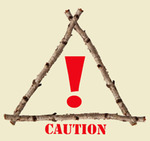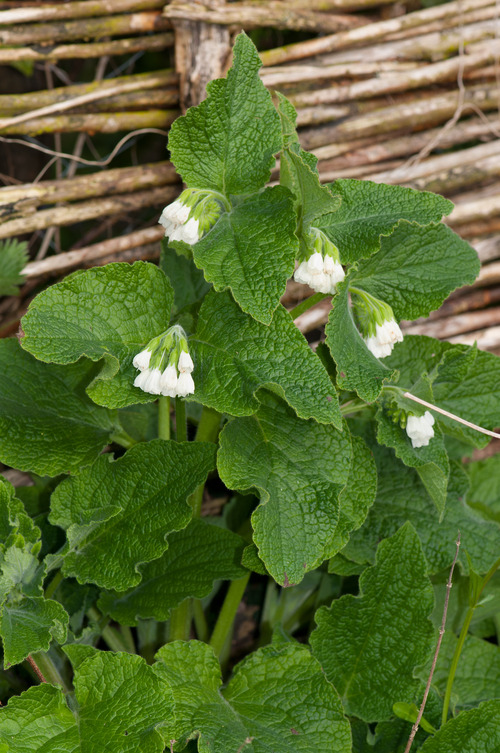

Comfrey contains small quantities of a toxic alkaloid which can have a cumulative effect upon the liver. This is why we use young leaves, as this alkaloid is found in higher volumes in the older leaves. The young leaves will contain a very small, almost undetectable amount, which means they are safe to eat.

Common Comfrey Symphytum officinale is a robust plant, usually found in ditches, damp hedgerows, churchyards, road sides and along the banks of rivers. The bell-like flowers appear April-June and may vary in colour, white being the most frequent, but, blues, pinks or even violet varieties are not uncommon.
The spear-shaped leaves are very coarsely textured, and by touch, not the type of leave you’d automatically think to be edible. The stems are a good identifying feature, as they don’t produce the classic “stalk”, but instead they continue down the stem to the next leaf.
The leaves are best used to make the classic dish of comfrey fritters. Use only the young leaves for this. Firstly make up some batter, I think batter made with a light beer, or even cider works best. Lightly coat the leaves in the batter and then deep-fry them, about a minute or two is usually sufficient, but don’t have the oil too hot or you will burn the outside of the batter without cooking the leaf.
The older leaves, once dried, make for a good tea substitute, and the young shoots may be used in the same way as asparagus. Only ever consume small amounts of comfrey.
Comfrey is a well-respected medicinal herb, and proves especially useful in the external treatment of minor injuries, such as cuts, bruises and eczema. It was also said to help fix broken bones. Comfrey contains a substance called ‘allantoin', a cell proliferant that speeds up the healing process. This substance is often used in medication, such as creams that promote healing.

Luddite on 03/05/12
I like comfrey, and I've used the young leaves as you would spinach, and older leaves in a green smoothie, or chopped in a stew. Comfrey also contains large amounts of mucilage, which is beneficial to the gut and helps to keep things moving.
Alan on 17/06/12
Hi
You advocate eating young leaves as they have less toxinx. However, every study I have seen mentions the young leaves to be the most toxic. The older leaves, esp in older plants have the least toxins.
Any thoughts ?